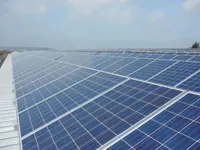
Get Closer to an Off Grid Home
How to Get Closer to an Off Grid Home
![]() If you’re a sustainable energy supporter, it’s likely that you’ve already considered many of the options available to reduce your home’s dependence on fuels such as coal and gas. Chances are you’re one of the few that has looked seriously at installing solar panels, you drive either a hybrid or entirely electric car (or use public transit and/or bikes and walking) and are compulsive about minimizing energy use wherever possible, whether that be by switching off lights, taking short showers, or unplugging unused appliances in order to get closer to an off grid home.
If you’re a sustainable energy supporter, it’s likely that you’ve already considered many of the options available to reduce your home’s dependence on fuels such as coal and gas. Chances are you’re one of the few that has looked seriously at installing solar panels, you drive either a hybrid or entirely electric car (or use public transit and/or bikes and walking) and are compulsive about minimizing energy use wherever possible, whether that be by switching off lights, taking short showers, or unplugging unused appliances in order to get closer to an off grid home.
But what if you were to begin transitioning your home to a zero net home, meaning one that emits either zero or almost zero carbon emissions. It’s true that it’s easiest to begin from scratch and build a home with the intended function of providing its own renewable energy, but that knowledge shouldn’t stop people from transitioning their existing homes into as close to zero net as possible. Thus making their homes more energy efficient as possible.

If you’re looking to move toward a zero-net home, the first step is to schedule a home energy assessment through a licensed and well reputed renewable energy contractor. Not only will a contractor point out the specific areas of your home that waste energy, they’ll also evaluate your home in order to determine which renewable energy sources would be easiest to install.
For example, those in more rural areas may have adequate space for a wind turbine, while those in sunny areas might benefit from increased solar; and if you’re lucky enough to live by a flowing river, there’s even a chance for hydroelectric power. For emergencies, or instances where your renewable energy fails you, a portable generator should be kept on hand as back-up.
Deciding which generator is right for you depends on the amount of power your home uses, and chances are you’ll use it less as you become better at understanding where your home wastes energy and what may cause your power to fail.
Once a power source is determined, your home should be sealed up as tightly as possible in order to reduce the amount of energy needed to keep your heating or cooling systems running normally. All gaps between windows, doors and the outside world should be eliminated. Then, invest in heavy insulation for all walls.
Windows can also be better insulated, and should be covered with honeycomb shades, which can block heat during the summer, and allow the sun’s warmth in during winter months. If you haven’t done so already, any electrical appliances, from lights to dishwashers, should be replaced with energy efficient brands that have Energy Star approval. Older equipment (seven years or more) is inefficient – it uses far more energy to run, and also lasts for less time.
After your electricity is set, consider your water options. A well-insulated solar water heater or an electric water heater with panels are both possibilities for maintaining zero-net consumption. Lastly, evaluate your air control. An energy efficient HVAC system should be placed on the list of above appliances that must be replaced with more efficient brands, but you should also use an energy recovery ventilation or heat recovery ventilation system for both air temperature and moisture levels.
For urban dwellers, there’s no reason to feel pressured to create all your home’s energy on site. Many zero net homes remain connected to the grid in order to send excess energy back into the electrical system (making a few dollars along the way) and others can contact their local provider to switch to a 100% renewable energy plan. Luckily, most state governments provide financial incentives for switching to renewable energy.









Nice commentary.
Ꮋello friends, its great article regarding tutorіngand fully defined, keep it up all the time.